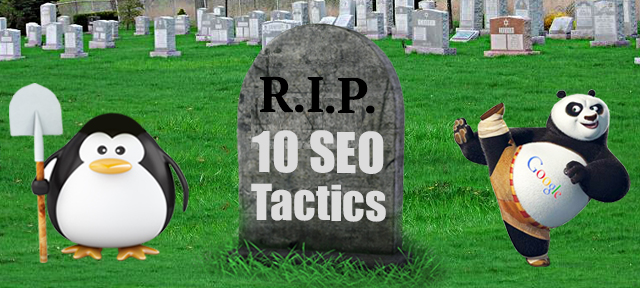Very few of them had seen a site-wide drop in rankings.
Whether the drop in rankings was large or small, the sites were only seeing a loss in rankings forsome of their keywords. We discovered that many of them were still enjoying top positions for some of their other keywords.
After analyzing the affected sites in depth, we reached the conclusion that some sort of targeted link devaluation was underway. Some pages had dropped a few pages, others had plummeted out of the search results, and still others were completely unaffected.
We’ve been tracking the rankings of a wide variety of sites over the past several months, and we find ourselves in agreement with what Branded3 has to say on the matter. We’re seeing Google moving in the direction of devaluing links on a continuous basis, as they are crawled, rather than eliminating them in large chunks with one-off updates like Penguin.
At this point, we’re fairly certain that the January 17 event was the result of continuous link devaluation, rather than a single update.
There was already some talk of an update on January 15, and certainly no shortage of grumblings before then. It’s our belief that January 17 was merely the point where this process reached critical mass. If Google is crawling bad links and using them as seeds to detect other bad links, then at some point this process will explode exponentially, which we feel is exactly what happened.
So in that respect, what Google is saying is true. There was no update on January 17. The changes started several months earlier.
Rather than delve into every nook and cranny of these link devaluation algorithms, we thought it would be more useful to offer you a guide to recovery, in a similar vein as our Ultimate Guide to Advanced Guest Blogging for SEOmoz. So let’s take a look out how to recover from link devaluation, and how to prevent it in the first place.
What is Link Devaluation?
Link devaluation itself is nothing new. Google has never released an “official” update on the matter, but it has been happening for quite some time. Any webmaster who has witnessed a drop in rankings that had nothing to do with a penalty, increased competition, or a Google update has experienced link devaluation. It is simply the process whereby Google disregards a link, treating it as though it does not exist.
What is new is the continuous devaluation of links. In the past, Google employees manually devalued links, or used a combination of manual selection and algorithmic extrapolation to find and devalue links. Now, it appears that Google is devaluing links as they are crawled and indexed, rather than removing them in large chunks.
Google has many incentives to move in this direction. Penalties are post-hoc and selective. They are usually based on sites surpassing a certain threshold of suspicious links or on-site activity. Penalties, in general, target sites or individual pages rather than link graph itself. In short, penalties only put a band-aid on the larger problem of webspam.
In contrast, link devaluation cleans up the entire link graph, rather than targeting individual sites.
Were Your Lost Rankings the Result of Link Devaluation?
If you are seeing a slow decline in your rankings rather than a sudden drop, this is almost certainly the result of link devaluation (if it’s not due to higher competition or fewer searches in the first place). But a relatively swift drop can also be the result of link devaluation if it only seems to be affecting specific pages, or if you are still seeing traffic even after the drop.
This is also true for some other updates and penalties, however, so you’ll want to consider the following:
- Has there been a Google update? Wait a few days and check with the top sites to see if any updates have been announced around the time you saw a drop in traffic. Check withMozCast to see if there were any major fluctuations in rankings around that time. If an update has occurred around that time, you will want to check into it before pursuing anything else.
- Take a look at the total “Links to your site” in Google Webmaster Tools to see if this number is dropping. If so, link devaluation is almost certainly the issue, since Google doesn’t typically omit links from webmaster tools for no reason. It is a good idea to create a spreadsheet and record your links over time (or use a tool to do this for you), so that these changes are more obvious.
- Identify the landing pages that have seen the largest drop in search traffic. If the quality of links is lower than usual and the quality of the content is average for your site, it’s unlikely to be Panda. If there hasn’t been a Penguin update, this means it is probably link devaluation.
Misconceptions About Link Devaluation
It’s easy to conflate all the various aspects of Google’s algorithm, so it’s important to clarify the following:
- Link devaluation is not Panda – Panda is designed to target low quality content. It is not based on link metrics. However, links from these affected pages are devalued, and this can indirectly affect your rankings.
- Link devaluation is not Penguin – Penguin targets entire sites that either use manipulative links to rank their own site or other sites. However, the links from these affected sites are devalued, and this is an effect that you may notice even if your site is not directly hit by Penguin.
- Link devaluation is not the unnatural links penalty – The unnatural links penalty was a precursor to Penguin that completely deindexed several sites that people were using to manipulate their rankings. Once again, links from these penalized sites are devalued, which can indirectly impact your rankings.
The important thing to understand about link devaluation is that it is not a penalty in the true sense. Devalued links simply don’t count, or don’t count as much as they used to. Most people who are impacted by Google updates aren’t actually directly affected. Instead, they are affected by the devalued links from the sites that are directly affected.
Now that links are being devalued on a continuous basis, you can be impacted even in the absence of a Google update. Do not confuse devalued links with penalties.
Responding to Link Devaluation: Do’s and Don’ts
It’s easy to do more harm than good by overreacting to a devaluation of your links (or any update or penalty, for that matter). Here are a few things to keep in mind to keep you on the right track.
Do’s:
- Revise your link building strategy by putting a focus on high quality links. We’ve written extensively about how to do that at Search Engine Journal with three posts on the subject.
- Use an anchor text strategy built for the modern world.
- Focus on content marketing as a link earning strategy, rather than merely building links. Take a look at our guide on the subject to get a handle on how to approach this.
- Approach SEO from a brand-building perspective, not a ranking perspective
Don’ts:
- Do not waste time removing low quality or spam links from your profile. The bad ones have already been devalued and aren’t being counted anymore. They don’t count against you if this is genuinely a link devaluation.
- Do not use the Google link disavow tool. In general, you shouldn’t use this tool unless you have received a warning or a notice of action directly from Google, as we’ve previously discussed. At best, you’ll only disavow the links that Google has already devalued. More likely, you’ll disavow links that Google hasn’t devalued and end up shooting yourself in the foot.
- Do not use any link building technique that allows you to personally build a large number of links quickly.
- Do not build links using easily produced or automated content. Build links using content that attracts attention.
- Avoid links that don’t make sense in the modern era, like the ones we talked about in this SEJ post.
5 Reasons the Push Toward Link Devaluation is Actually a Good Thing
If Google’s new emphasis on continuous link devaluation sounds scary to some SEOs, here are a few reasons to see the change as a positive one:
- Devalued links don’t count against you, so there is no reason to spend time removing all the suspected links yourself.
- Devalued links don’t cause your site’s traffic to plummet overnight in the majority of cases, which gives you time to adjust your strategy.
- You will generally still see some of your pages unaffected after link devaluation occurs, unless a large number of devaluations causes your entire domain authority to start sinking.
- You can focus all of your efforts on building high quality links, rather than being concerned about weeding out bad ones.
- Spammers will be less likely to see results even in the short term, as opposed to the repeated process of success then penalty over and over again. Similarly, you will get more consistent feedback from your rankings about whether what you are doing is working or not.
Conclusion
Links devaluation is something not easy to identify unless you analyze it deeply or take help from the professionals. Identifying the right cause of penalty is the most important rather than taking actions and moving forward. I highly recommend taking help of professionals if you are unable to identify the cause of penalty as moving into wrong direction will put you in trouble and you will not be able to see your website rankings back that stay last long.
If you come across to suspicious behavior on your website and are not sure about the cause, feel free to get in touch with us and we’d be glad to taking a look and providing our suggestions.
Do you have any other ideas/suggestions to do the best with Links Devaluation recovery?
















